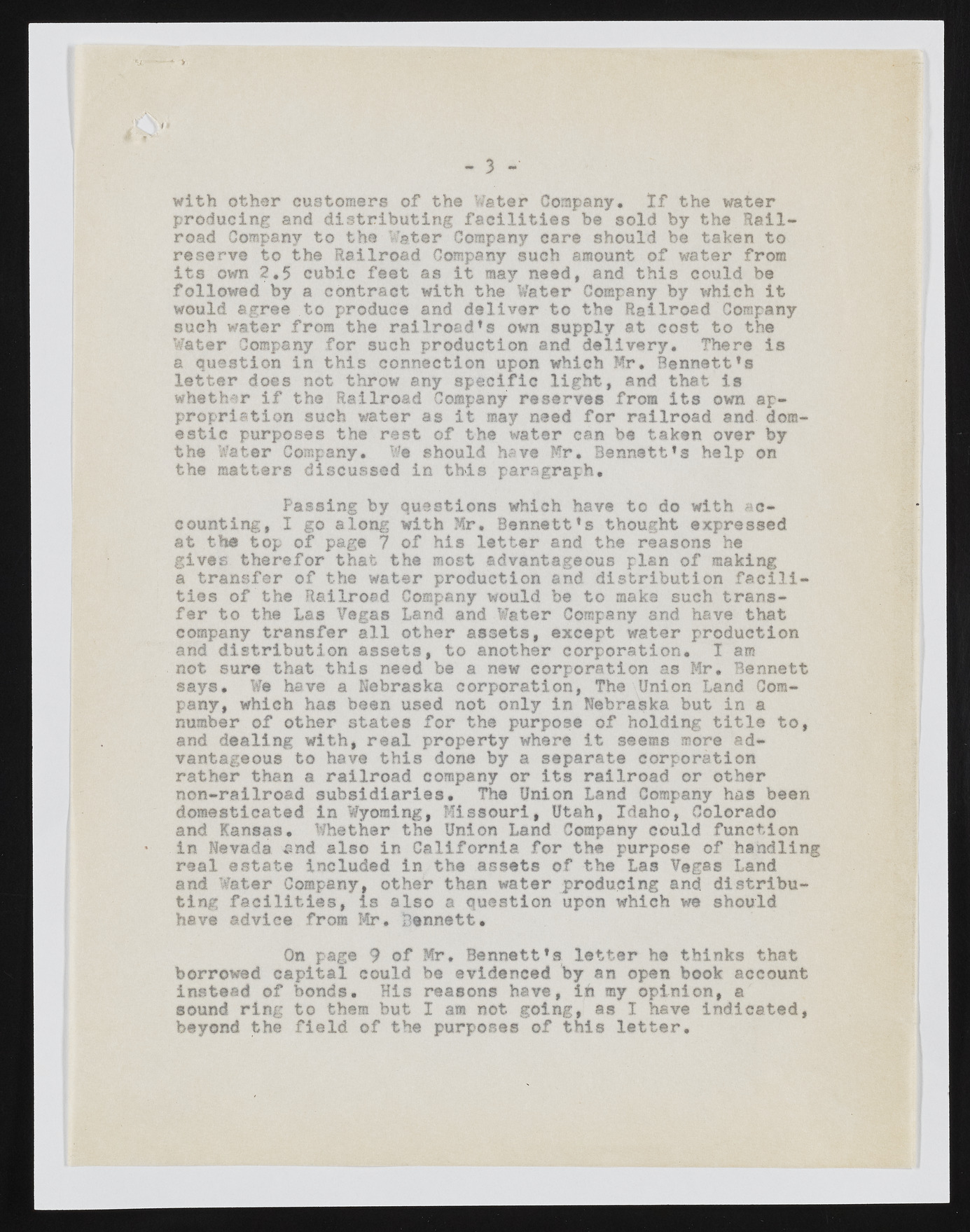Copyright & Fair-use Agreement
UNLV Special Collections provides copies of materials to facilitate private study, scholarship, or research. Material not in the public domain may be used according to fair use of copyrighted materials as defined by copyright law. Please cite us.
Please note that UNLV may not own the copyright to these materials and cannot provide permission to publish or distribute materials when UNLV is not the copyright holder. The user is solely responsible for determining the copyright status of materials and obtaining permission to use material from the copyright holder and for determining whether any permissions relating to any other rights are necessary for the intended use, and for obtaining all required permissions beyond that allowed by fair use.
Read more about our reproduction and use policy.
I agree.Information
Digital ID
Permalink
Details
Member of
More Info
Rights
Digital Provenance
Publisher
Transcription
with other customers of the Water Company. I f the water producing and d istrib u tin g f a c i l i t i e s be sold by the S a il-road Company to the Water Company care should be taken to reserve to the Sailroad Company such amount o f water from it s own 2.5 cubic fe e t as i t may need, and th is could be follow ed by a contract with the Water Company by which i t would agree to produce and d e liv e r to the Railroad Company such water from the ra ilro a d ’ s own supply at cost to the Water Company fo r such production and d eliv ery . There is a question in th is connection upon which Mr. Bennett’ s le t t e r does not throw any s p e c ific lig h t, and that Is whether i f the Railroad Company reserves from it s own appropriation such water as i t may need fo r railroad and dome s tic purposes the rest o f the water can be taken over by the Water Company. ¥• should have Mr. Bennett’ s help on the matters discussed in th is paragraph. Passing by questions which have to do with accounting, I go along with Mr. Bennett’ s thought expressed at the top o f page 7 o f his le t t e r and the reasons he gives therefor that the most advantageous plan o f making a tran sfer o f the water production and distribu tion f a c i l i tie s o f the Railroad Company would be to make such transfe r to the Las Vegas Land and Water Company and have that company transfer a ll other assets, except water production and distrib u tion assets, to another corporation. I am not sure that th is need be a new corporation as Mr, Bennett says. We have a Nebraska corporation, The Union Land Company, which has been used not only in Nebraska but in a number o f other states fo r the purpose o f holding t i t l e to , and dealing with, r e a l property where i t seems more advantageous to have th is done by a separate corporation rather than a railroad company or it s railroad or other non-railroad su bsidiaries. The Union Land Company has been domesticated in Wyoming, Missouri, Utah, Idaho, Colorado and Kansas, Whether the Union Land Company could function in Nevada and also in C aliforn ia fo r the purpose of handling re a l estate included in the assets o f the Las Vegas Land and Water Company, other than water producing and distribu ting f a c i l i t i e s , is also a question upon which we should have advice from Mr. Bennett. On page 9 o f Mr. Bennett’ s le t t e r he thinks that borrowed capital could be evidenced by an open book account instead o f bonds. His reasons have, ih my opinion, a sound rin g to them but I am not going, as I have indicated, beyond the f ie ld o f the purposes o f th is le t t e r .

